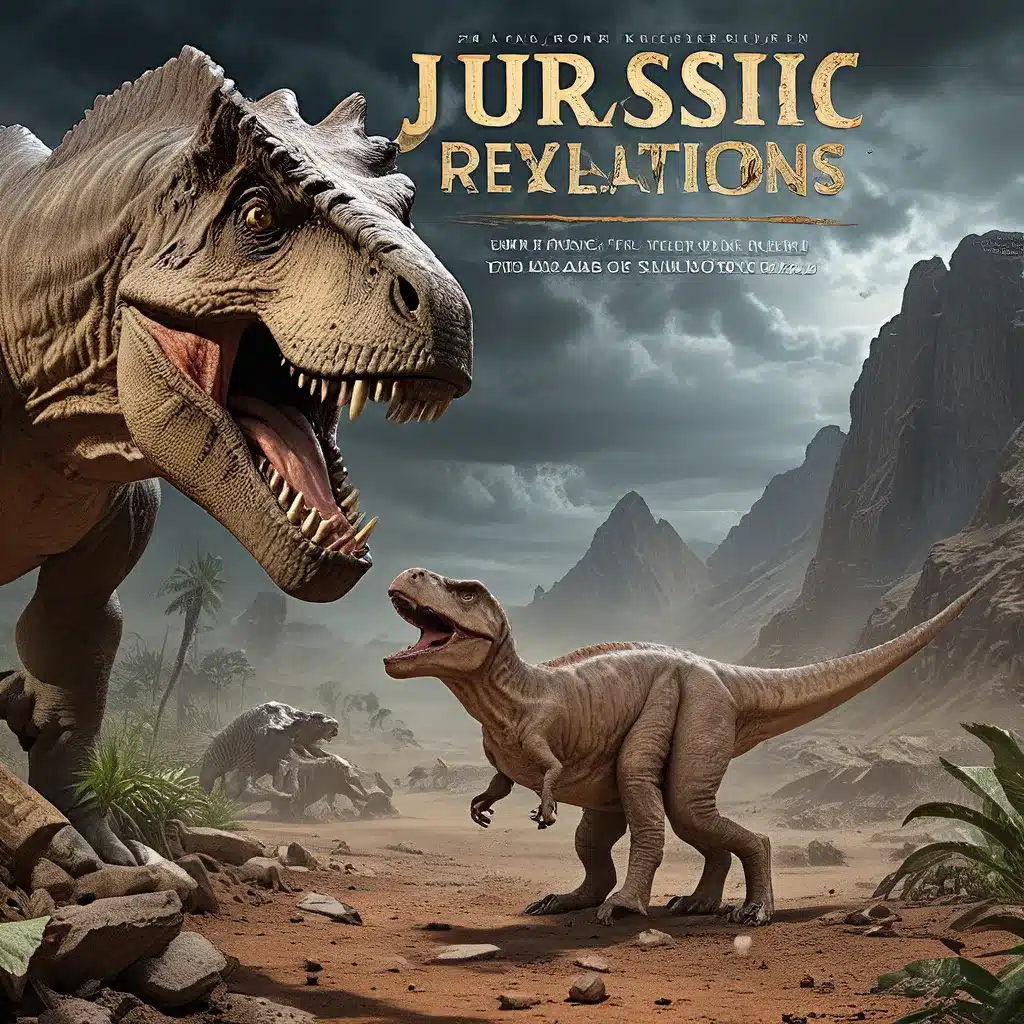
Rethinking the Dinosaur Paradigm: From Terrible Lizards to Feathered Wonders
In the not-so-distant past, our understanding of dinosaurs was largely shaped by the reptilian caricatures popularized in Hollywood blockbusters. However, a surge of fossil discoveries and advancements in paleontology have revolutionized our perceptions, unveiling a far more nuanced and captivating narrative about these ancient creatures.
One of the most significant revelations is the undeniable evolutionary link between dinosaurs and birds. Contrary to the long-held belief that dinosaurs were merely “terrible lizards,” we now know that these prehistoric behemoths are in fact the direct ancestors of modern avian species. The discovery of feathered dinosaurs, such as Anchiornis and Yi qi, has shattered the reptilian stereotype and forced us to reconsider the very definition of a “dinosaur.”
Uncovering the Secrets of Dinosaur Anatomy and Physiology
As our understanding of dinosaur evolution has progressed, so too has our knowledge of their anatomy and physiology. Gone are the days when we envisioned these creatures as cold-blooded, sluggish giants. Emerging evidence suggests that many dinosaurs, particularly theropods (the group that includes Tyrannosaurus rex and its close relatives), were likely warm-blooded and possessed advanced respiratory systems akin to those found in modern birds.
The discovery of quill knobs on the ulna bones of Velociraptor and its kin has provided irrefutable proof that these dinosaurs were covered in feathers, challenging the long-held reptilian depictions. Furthermore, the detailed preservation of soft tissues in exceptional fossil finds, such as the sleeping posture of Mei long, have offered unprecedented glimpses into the behavior and ecology of these ancient creatures.
The Evolutionary Emergence of Sauropod Giants
One of the most awe-inspiring aspects of dinosaur evolution is the rise of the sauropods, the largest terrestrial animals to have ever roamed the Earth. These long-necked, quadrupedal herbivores dominated the Jurassic and Cretaceous periods, with some species reaching staggering sizes that defy modern imagination.
Recent paleontological discoveries and anatomical studies have shed light on the evolutionary adaptations that enabled these giants to flourish. The transition from bipedal to quadrupedal locomotion, coupled with the development of highly specialized necks capable of sweeping across vast swaths of vegetation, were key factors in the sauropods’ success as dominant herbivores.
Pulanesaura, a newly described sauropod from the Early Jurassic of South Africa, provides fascinating insights into the incipient stages of sauropod gigantism. By examining the unique morphology of Pulanesaura’s limb bones and joints, researchers have uncovered clues about how these prehistoric behemoths were able to support their massive frames and efficiently exploit their environment.
Unraveling the Mysteries of Dinosaur Extinction
Perhaps the most captivating and enduring aspect of dinosaur lore is the mystery surrounding their extinction. The prevailing theory of a catastrophic asteroid impact at the end of the Cretaceous period has long captured the public’s imagination, but recent research has revealed a more nuanced and complex picture.
Emerging evidence suggests that the mass extinction event was not a single, sudden cataclysm, but rather the culmination of a series of environmental stresses that had been building for millions of years. Factors such as volcanic activity, climate change, and ecological imbalances may have all played a role in the dinosaurs’ ultimate demise**.
Furthermore, the survival of birds as the only living dinosaurs has prompted a closer examination of the evolutionary advantages that enabled them to weather the storm. Adaptations like feather insulation, advanced respiratory systems, and smaller body size may have been key factors in the birds’ ability to thrive where their dinosaurian ancestors could not.
Embracing the Avian Legacy of Dinosaurs
As we continue to unravel the mysteries of dinosaur evolution, one thing is becoming increasingly clear: these ancient creatures are not merely relics of the past, but rather the evolutionary precursors to the vibrant and diverse avian species that grace our skies today.
By reframing our understanding of dinosaurs as the feathered, warm-blooded ancestors of modern birds, we can gain a deeper appreciation for the remarkable resilience and adaptability of life on our planet. The evolutionary journey from the massive sauropod giants to the agile, airborne avians is a testament to the power of natural selection and the remarkable diversity of life that has flourished over the course of millions of years.
As we explore the latest discoveries and emerging theories in the world of dinosaur paleontology, we are not just uncovering the untold stories of the past, but also gaining crucial insights into the origins and evolution of the remarkable creatures that continue to captivate our imaginations and inspire our wonder. By embracing this avian legacy, we can celebrate the remarkable resilience of life and the enduring fascination that dinosaurs hold for people of all ages and backgrounds.
The Lost Kingdoms is proud to be at the forefront of this dinosaur renaissance, sharing the latest discoveries and cutting-edge research with our readers. Join us as we continue to unearth the untold stories of these remarkable creatures and explore the rich tapestry of life that has flourished across the ages.


